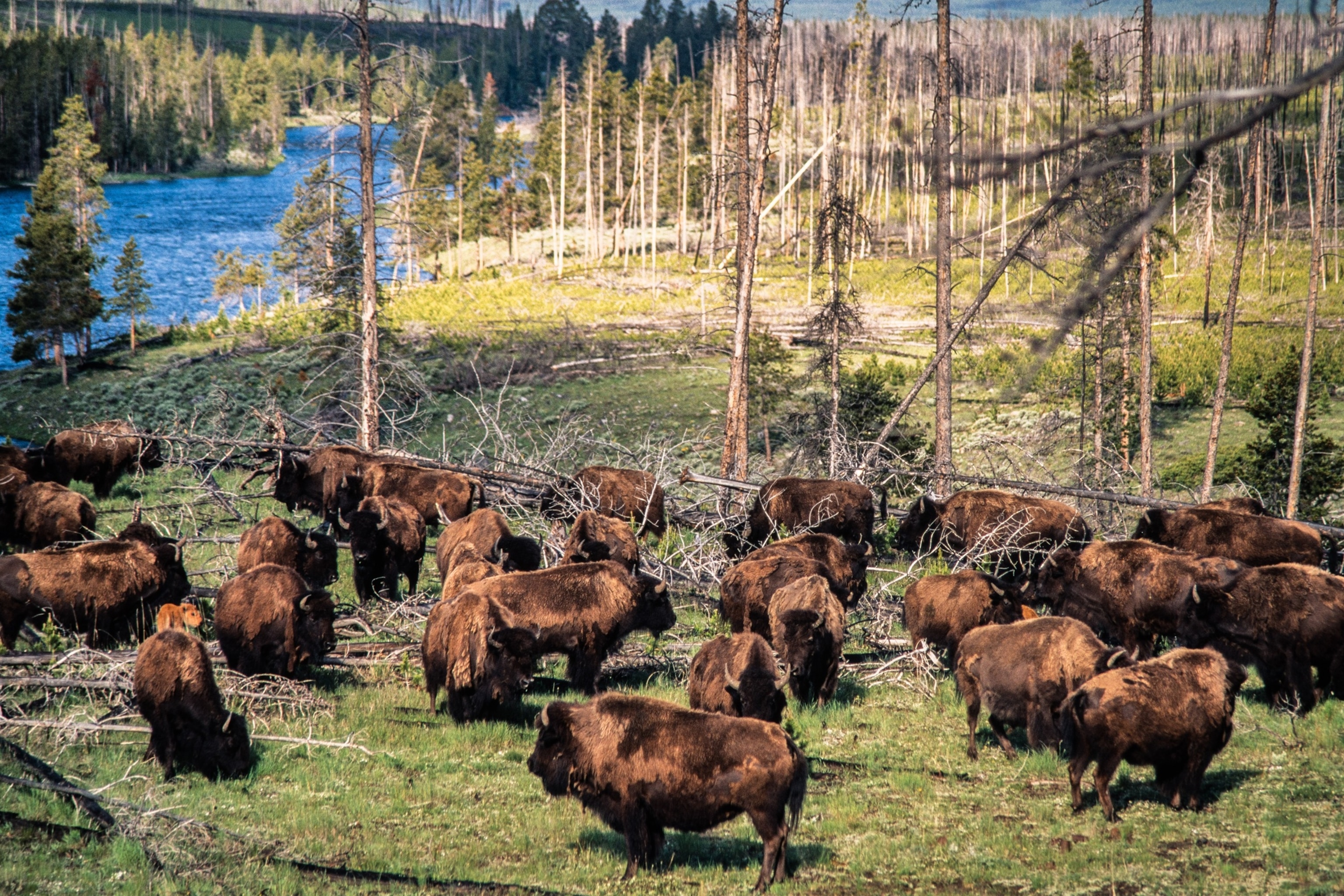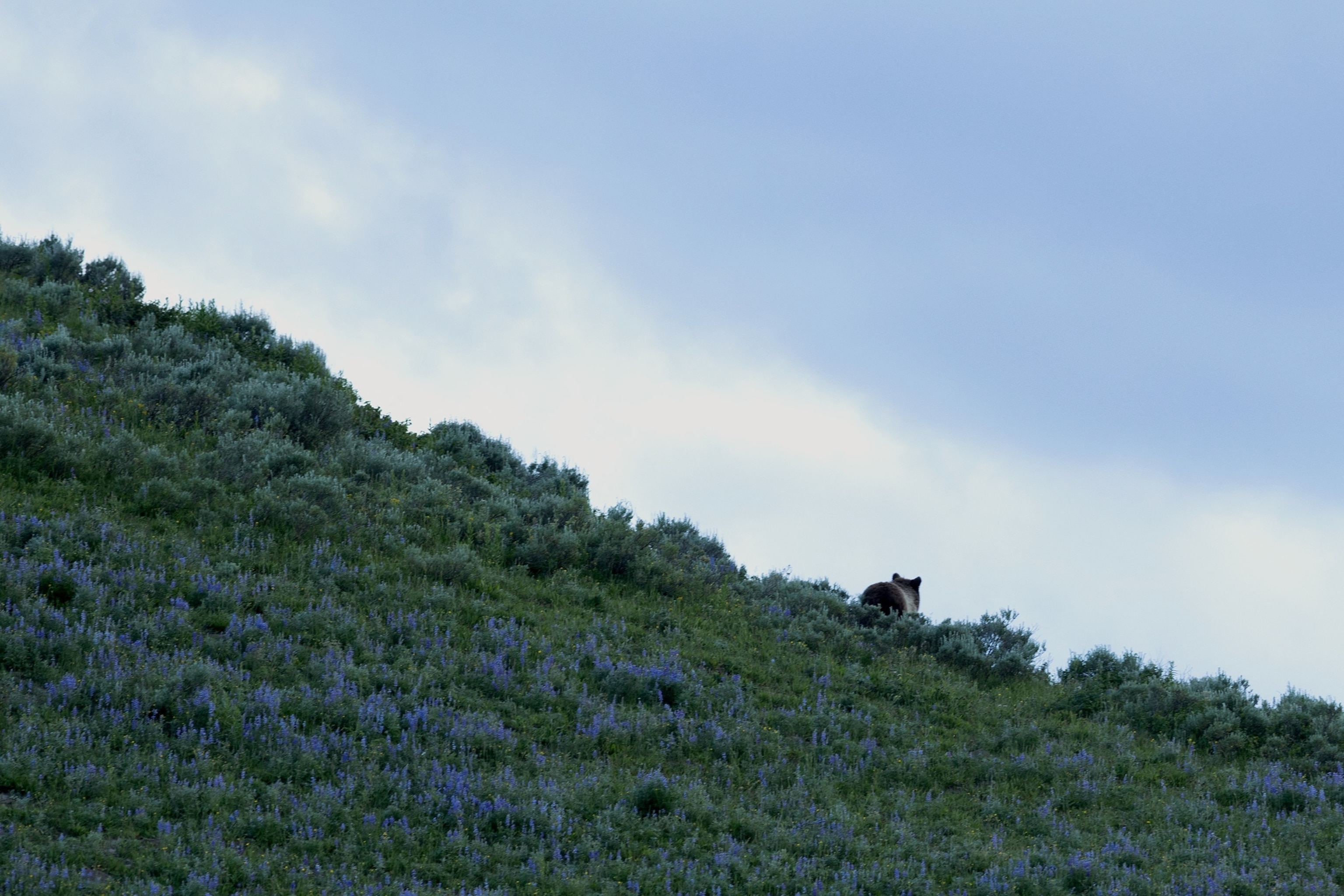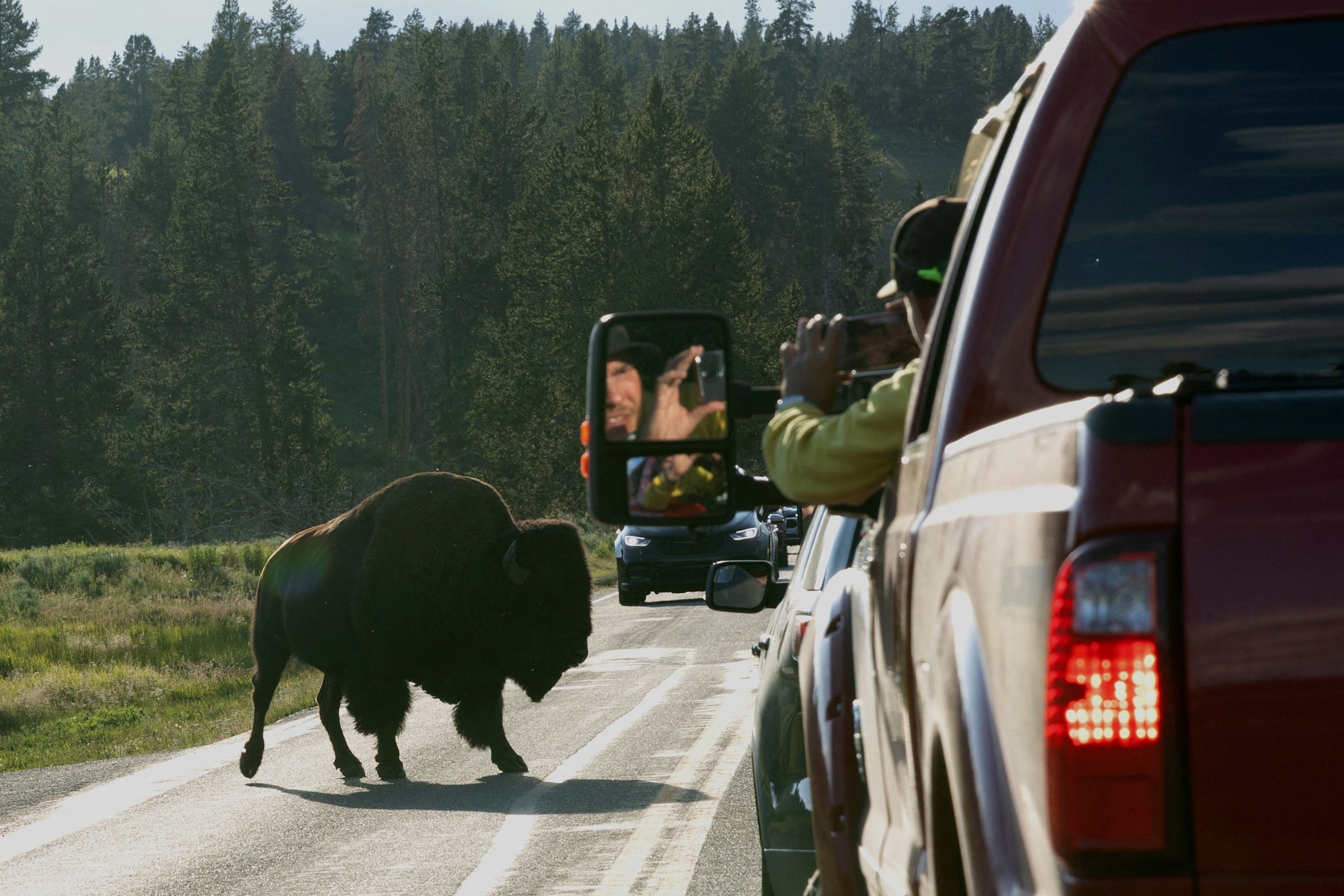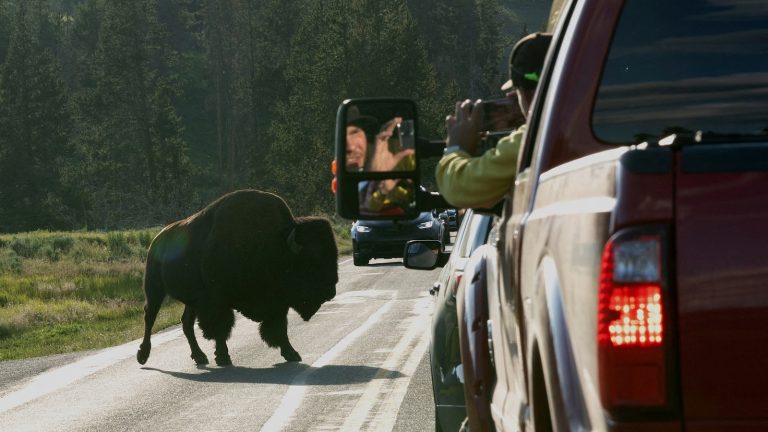The National Park Service is clearing up any misconceptions on whether wildlife is migrating away from Yellowstone National Park.
Videos have been spreading on social media platforms that appear to show a plethora of animals, such as herds of bison, elk, mountain lions and grizzly bears, are leaving the nation’s oldest national park in large quantities.
In one video posted to TikTok and Instagram, a group of grizzly bears appears to be walking along a road, leaving the reserve. Others show lines of bison and groups of elk doing the same.
As a result, the topic has been trending on Google for the past week.
However, the NPS believes the videos that are circulating on social media are AI-generated and “satirical in nature,” Linda Veress, a spokesperson for the NPS, told ABC News.
“Wildlife is not leaving Yellowstone National Park in large numbers,” Veress said. “This rumor is false.”

A herd of bison graze in the area of an old wildfire in Yellowstone National Park in Wyoming, Dec. 29, 2020.
Jon G. Fuller/VWPics/Universal Images Group via Getty Images
While there are natural ebbs and flows of wildlife migration within Yellowstone, the majority of movement tends to happen in the winter, Bill Hamilton, a wildlife biologist at Washington and Lee University who has been researching the ecology at Yellowstone for 20 years, told ABC News.
Yellowstone is home to hundreds of species of birds, fish and mammals, according to the NPS. It is the only national park in North America where there are no fences to contain the wildlife, and therefore, they are able to roam freely, Hamilton said.
“They’re free to come and go, and there’s a migratory path for elk and bison and deer,” Tom Murphy, a wildlife photographer who has been snapping images at Yellowstone for 50 years, told ABC News.
The animals leave the park in the winter to get better access to food that is likely covered in snow inside the park, Hamilton said. When the animals that eat plants and grasses leave, the predators follow, he added. The mountain lions follow the deer, and the wolves move with the elk.
Wildlife rarely migrates during the summer, unless they are forced out by an extreme event, such as a large wildfire, Hamilton said.
This year is a “normal year,” with typical weather and moisture, Murphy said. But elk and bison may seek higher ground in search of cooler temperatures and fewer insects, Murphy said.
“There’s no reason for them to be leaving right now,” Murphy said.

A grizzly bear is seen in the Hayden Valley of Yellowstone National Park, Wyoming, July 5, 2025.
Kaylee Greenlee/Reuters
Some of the social media users hypothesized that the supposed migrations were occurring due to a pending eruption at Yellowstone’s supervolcano.
The park’s complex and extensive volcanic system is thoroughly monitored by the U.S. Geological Survey and the Yellowstone Volcano Observatory.
The current alert level for volcanic activity at Yellowstone is “normal” or “Code Green,” according to the USGS.
“Geologically, it’s going to erupt in the next 2 million years, but probably not today,” Murphy said.
While video of dozens of bison moving together has been recorded in the past, it is usually about 40 bison out of about 4,500 in the park, Hamilton said. In the winter, it’s easier for the animals to walk on the road rather than snow-covered ground, Murphy said.
“It was a very small percentage of the total herd size,” Hamilton said. “Those things get observed, but it’s not massive numbers of animals.”

A visitor looks at a bison on a road in the Hayden Valley of Yellowstone National Park, Wyoming, July 5, 2025.
Kaylee Greenlee/Reuters
It is immediately apparent that the video of the group of grizzly bears is fake because bears never get close together in that manner, Hamilton said. Grizzly bears don’t congregate unless there’s a “heavy, productive” food source around, such as a salmon stream in Alaska or a dead bison carcass at Yellowstone.
The video of the mountain lions is also “nonsense,” because mountain lions don’t migrate, Murphy said.
“They have a weekly round with a territory that they travel through, but you’re not going to see them in a video of them running down the road,” Murphy said.
While the misinformation may just be a form of entertainment, it can become concerning if people start to believe it, Hamilton said.
“It does undermine the overall perception of understanding how things work, how nature works,” Hamilton said.



